
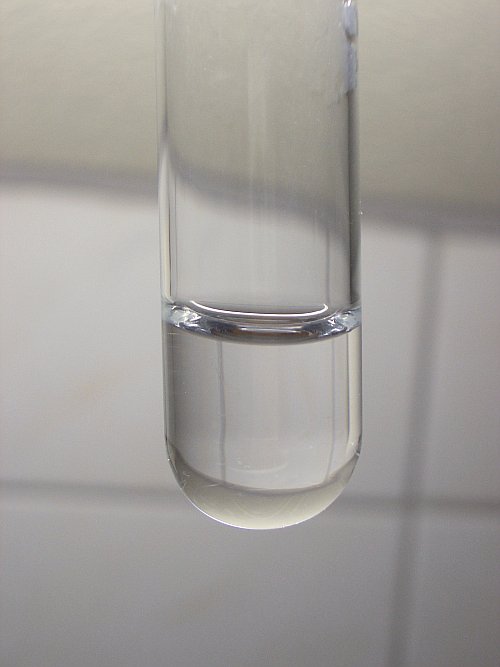

Aqueous solutions and precipitates of silver
The aqueous chemistry of silver is mainly restricted to its +1 oxidation state, but with very strong oxidizers it is possible to obtain a solution of silver in its +3 oxidation state. These solutions, however, are unstable and suffer from a combination of loss of oxygen and hydrolysis. Water is oxidized and due to hydrolysis some oxide is formed.
Silver also exists in the +2 oxidation state, in the compound AgF2. This compound, however, is a very strong oxidizer and when it is added to water, it oxidizes the water at once. So, aqueous solutions of silver (II) ions are not stable at all.
Solutions of silver (I), however, are very stable and do not hydrolyse. They can be stored indefinitely without any noticeable decomposition or formation of insoluble compounds. This is in contrast with most other transition metals which do suffer from hydrolysis at least to some extent.
![]()
Oxidation state +1
Solutions of silver (I) salts are colorless and totally clear. They look just like plain water. Below, at the left, a picture is shown of a solution of silver nitrate.

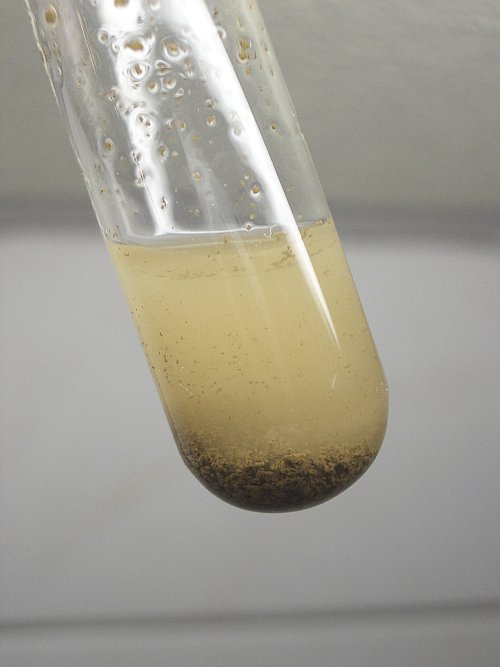
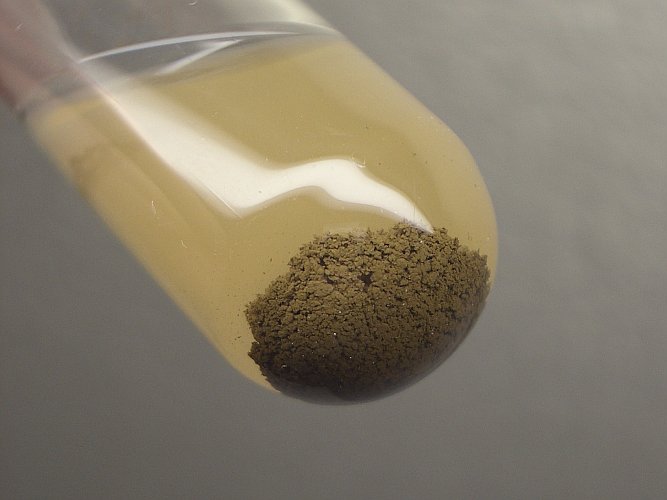
When a solution of sodium hydroxide or potassium hydroxide is added to such a solution of silver nitrate, then a brown precipitate is formed. Silver does not form a real hydroxide, the brown compound, however, also is not pure silver(I) oxide. Pure and dry silver(I) oxide is black. The brown compound, shown here, best can be described as Ag2O·nH2O, with the value of n depending on the several conditions of the experiment.
![]()
Oxidation state +3
When a solution of AgNO3 in 2M HNO3 is mixed with a solution of Na2S2O8 in 2M HNO3, then the solution turns brown. This solution has very strong oxidizing properties. It is even capable of oxidizing manganese(II) salts to the +7 oxidation state (permanganate) quickly.
This brown solution contains silver in its +3 oxidation state. It is not fully established whether this is as a plain aqua ion, or combined/coordinated to something else (e.g. silver(I) ions or persulfate). This brown solution is not very stable. Especially when slightly heated, it produces oxygen and the color becomes lighter. When the pH is raised by adding a small amount of a solution of dilute NaOH, then the solution becomes turbid and a black solid is formed. This black solid is Ag2O2. According to the book "Chemistry of the Elements", written by Greenwood and Earnshaw, this, however, is not silver(II) oxide, but silver(I) silver(III) oxide, AgIAgIIIO2. This black solid even is formed, when the solution still is quite acidic. Apparently, silver(III) ion is very prone to hydrolysis. The left picture shows the brown silver(III) solution and the right picture shows the precipitate of AgIAgIIIO2.
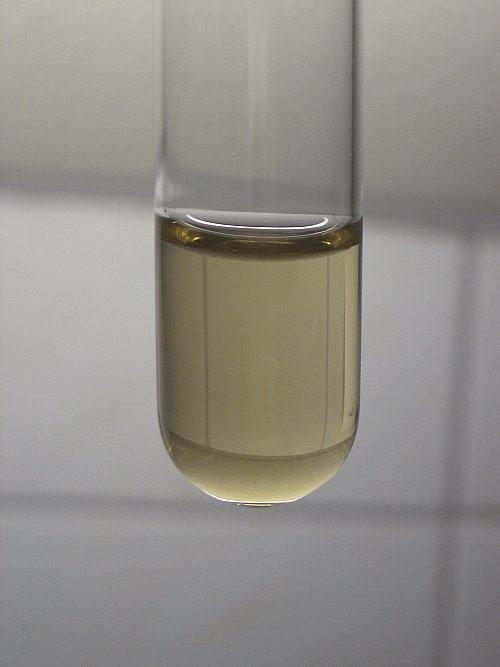
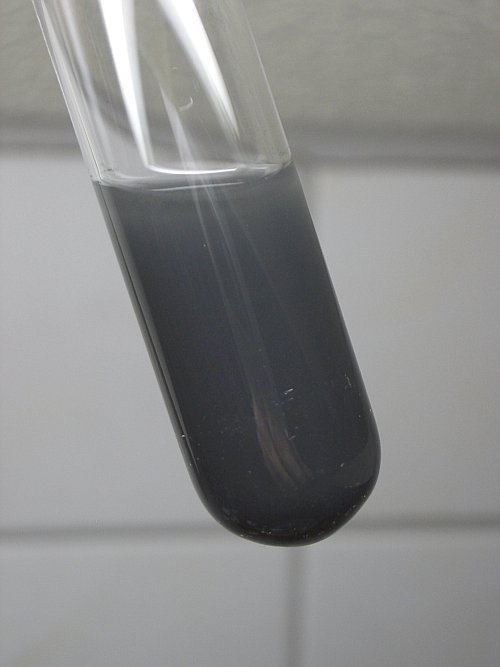
Silver ion is a strong catalyst for reactions, involving persulfate ion as oxidizer. Persulfate is a strong, but slow oxidizer in many reactions. It, however, oxidizes silver(I) to silver(III) very quickly (at once, no visible delay). Silver(III) in turn is a fast oxidizer for many other reactions. E.g. when an acidic solution of a chromium(III) salt is mixed with a solution of sodium persulfate, then nothing happens. Only after long boiling of the solution, the chromium(III) is converted to chromium(VI) as dichromate ion. In the presence of some silver(I) salt, the reaction proceeds smoothly with only little heating. The silver(I) is quickly oxidized by the persulfate and the silver(III) in turn quickly oxidizes chromium(III) to chromium(VI).
back to solutions/precipitates main page
back to miscellaneous main page